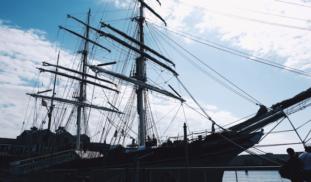Please wait...
About This Project
Were sailors actually ship-shape--or were they truly a sickly bunch? Find out with us! We are replicating shipboard food using the exact ingredients and methods from the 17th century. Then, a transatlantic voyage is simulated by storing the food in casks and keeping them on Elissa, the 19th century tallship. The nutritional and microbiological data from this project will offer a glimpse into the unique food situation, health, and daily life of past sailors.
More Lab Notes From This Project

Browse Other Projects on Experiment
Related Projects
What Did 17th-Century Sailors Really Eat?
Were sailors actually ship-shape--or were they truly a sickly bunch? Find out with us! We are replicating...
How can a specialized diet affect the shape of the primate neck?
The neck is involved in most everyday behaviors. Still, we do not understand how specific behaviors shape...
A game changer for primate welfare & conservation attitudes: Free-choice digital enrichment & Human-Animal Interaction
When great apes exert control over their environment their welfare improves, and when zoo visitors have...





